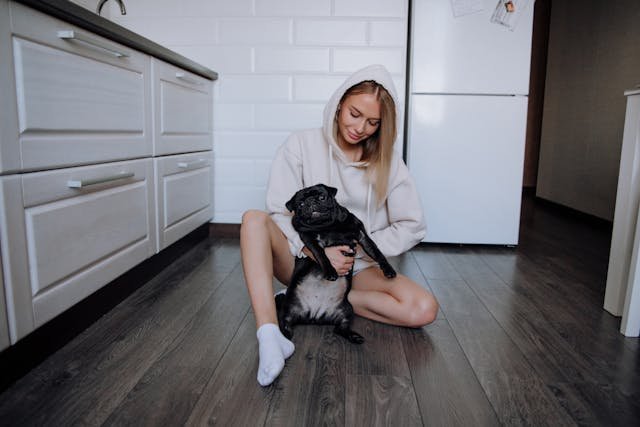Pugs might be small, but their personalities are anything but. With their expressive eyes, snorts, and funny quirks, they have a way of communicating that goes beyond words. But here’s the truth: sometimes, your pug might be trying to tell you something serious—and you might be missing it.
Don’t make the mistake of brushing off these behaviors as “just being a pug.” Because sign #6? It could be life-changing.

1. Sudden Change in Breathing Patterns
Pugs already have distinct breathing sounds, but if your pug suddenly starts wheezing, gasping, or snoring louder than usual, it’s not just a “cute quirk.” It could be a sign of Brachycephalic Obstructive Airway Syndrome (BOAS) — a condition common in flat-faced breeds.
Don’t ignore: Persistent heavy breathing, even while resting.

2. They Start Avoiding You
Pugs are velcro dogs. If your normally clingy companion starts hiding or avoiding affection, it could be due to pain, anxiety, or internal discomfort. It’s not sass — it’s a red flag.
3. Whining or Whimpering at Night
Nighttime vocalizing can be a subtle cry for help. This could mean anything from joint pain to separation anxiety. Watch for pacing or changes in their sleep habits too.
4. Licking the Same Spot Over and Over
Excessive licking is more than a weird habit—it’s often a sign of allergies, infection, or stress. If your pug is fixated on one area, check for redness, irritation, or swelling.

5. Change in Bathroom Habits
Accidents indoors, constipation, or frequent urination? These aren’t just “oops” moments. They could signal UTIs, kidney issues, or even diabetes—yes, dogs can get that too.
6. Head Pressing
This one is serious. If your pug starts pressing their head against walls or furniture, get them to a vet immediately. It can be a sign of neurological problems, liver issues, or poisoning.
Don’t ignore this. It’s not cute—it’s urgent.
7. Suddenly Becoming Aggressive or Fearful
Behavioral changes can stem from pain, trauma, or a neurological issue. If your normally chill pug is snapping or hiding in fear, something deeper is going on.

8. Dragging Back Legs or Stumbling
Weakness or uncoordinated movements can indicate IVDD (intervertebral disc disease) or spinal problems. Early intervention can make all the difference.
9. Constant Pawing at the Mouth or Face
This might mean something is stuck, but it could also point to tooth pain, infections, or even vision issues. Don’t just chalk it up to itchiness.
10. Sudden Loss of Appetite
Your pug skipping a meal might not seem like a big deal, but when paired with lethargy or vomiting, it could signal gastrointestinal problems, organ dysfunction, or worse.

Trust Your Gut—and Theirs
Pugs are quirky, expressive, and full of personality. But behind those big, bulging eyes and wrinkly smiles, there’s a sensitive little being who depends on you to pay attention.
If something feels “off,” don’t wait. Your pug could be trying to tell you something serious.
What to Do When You Notice These Signs
If you observe any of these warning signs, don’t wait to see if they resolve on their own. Pugs have unique health considerations, and early intervention is often key to successful treatment. Keep a journal of symptoms if they’re ongoing, including when they started and any patterns you notice, to help your veterinarian make an accurate diagnosis.
Remember that you know your pug better than anyone else. If something seems off, trust your instincts and consult with your veterinary professional. Your pug relies on you to be their advocate and voice when something isn’t right.
Your pug gives you unconditional love and companionship every day—staying alert to these warning signs is one important way to return that love and ensure many happy, healthy years together.








